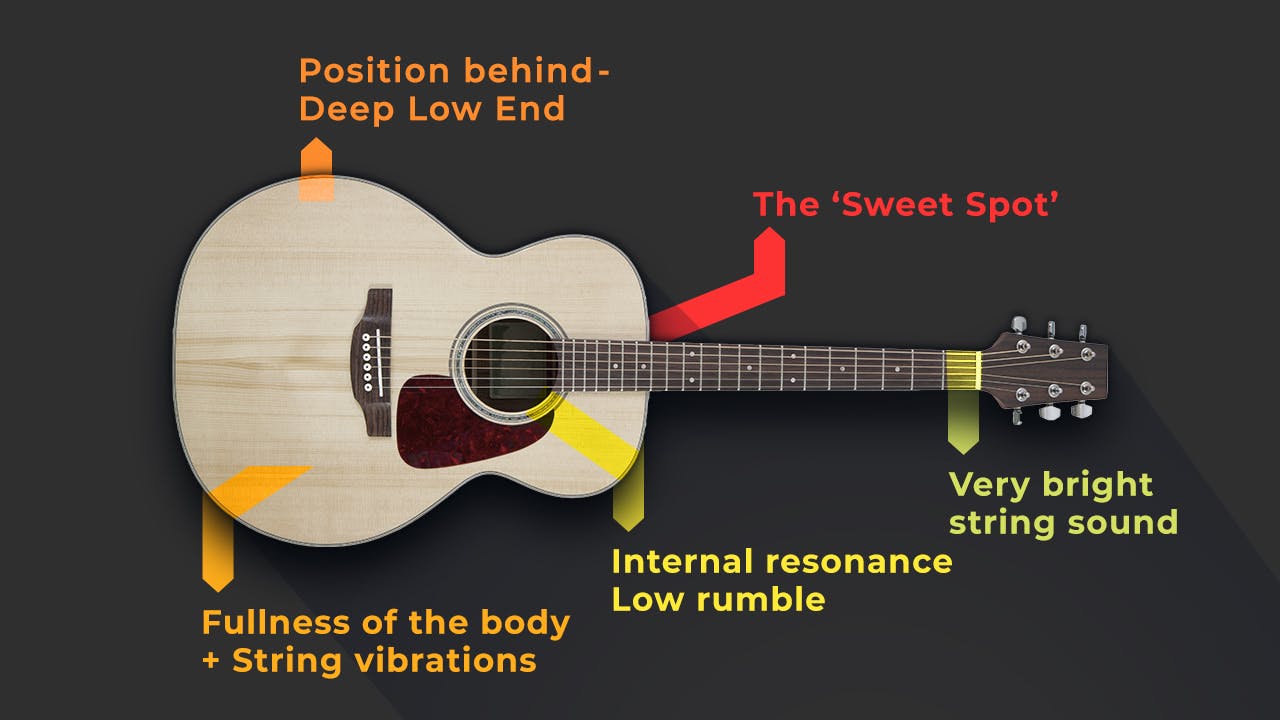When it comes to recording acoustic guitar, there are several factors to consider in order to capture the best sound possible. Whether you’re a beginner or a seasoned musician, these tips will help you achieve a high-quality recording that truly showcases the beauty of your acoustic guitar.
1. Room Selection
The first step in recording acoustic guitar is choosing the right room for the job. Ideally, you want a room with minimal background noise and good acoustics. Look for a space that has a balanced sound and avoid rooms with excessive reverb or echo.
2. Microphone Placement
Proper microphone placement is crucial in capturing the rich and balanced tone of the acoustic guitar. Start by positioning the microphone around the 12th fret, pointing towards the soundhole. Experiment with different mic distances and angles to find the sweet spot that captures the desired sound.
3. Use Multiple Microphones
An effective technique for recording acoustic guitar is to use multiple microphones. This allows you to capture different aspects of the guitar’s sound. Consider combining a close microphone on the soundhole with a room microphone to add depth and ambience to the recording.
4. Experiment with Mic Types
There are various types of microphones that can be used for recording acoustic guitar, such as condenser, dynamic, and ribbon microphones. Each type has its own unique characteristics and tonal qualities. Experiment with different mic types to find the one that best suits your acoustic guitar and desired sound.
5. Monitor the Recording
While recording, it’s important to monitor the sound to ensure optimal results. Use high-quality headphones or studio monitors to accurately gauge the recording. Pay attention to any unwanted noises, such as string squeaks or fret buzz, and make adjustments accordingly.

Credit: acousticguitar.com

Credit: www.waves.com
6. Control External Noise
Avoid external noise interference during recording sessions. Turn off fans, air conditioners, or any other sources of noise that may affect the recording. Consider using soundproofing materials to minimize background noise and reflections.
7. Use a Pop Filter
A pop filter is a screen placed in front of the microphone to prevent plosive sounds, such as “p” and “b” sounds, from distorting the recording. This accessory helps to ensure a clean and clear recording of your acoustic guitar.
8. Pay Attention to String Noise
Acoustic guitars can produce string noise, especially during fast strumming or fingerpicking. To minimize this noise, try using lighter gauge strings or applying a lubricant to the strings. Additionally, practice playing techniques that reduce the amount of string noise produced.
9. Consider Post-Processing
After recording, consider post-processing to enhance the sound of your acoustic guitar. This can include adjusting EQ settings, adding reverb or delay effects, or applying compression to even out the dynamics. Experiment with different techniques to achieve the desired sound.
10. Practice and Experiment
Recording acoustic guitar is a skill that improves with practice. Take the time to experiment with different techniques, microphone placements, and recording environments to find the combination that best captures your unique sound. Don’t be afraid to try new things and trust your ears.
By following these tips, you’ll be well on your way to recording acoustic guitar tracks that sound professional and allow the true essence of your instrument to shine through. Remember, practice makes perfect, so keep honing your recording skills to achieve the best results!
Frequently Asked Questions For What Are Some Tips For Recording Acoustic Guitar?
How Can I Get The Best Sound Recording?
To get the best sound recording of acoustic guitar, ensure a quiet environment and use high-quality microphones.
What Are Some Common Mistakes To Avoid While Recording?
Common mistakes to avoid while recording acoustic guitar include using low-quality microphones and not optimizing room acoustics.
How Can I Enhance The Recording Quality?
To enhance the recording quality, use high-quality microphones, experiment with microphone placement, and optimize room acoustics.
What Is The Ideal Room For Recording Acoustic Guitar?
The ideal room for recording acoustic guitar is a quiet, well-insulated space with minimal sound reflections.